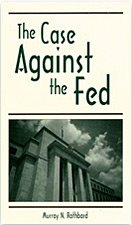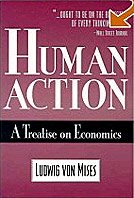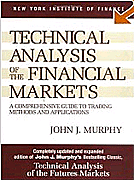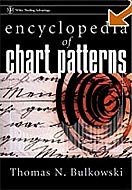Jim Sinclair: Stay Gold
As the economy tanks, doomsayers and commodity traders say it's time to invest in the shiny stuff
By Nathan Paluk
Hartford (Connecticut) Advocate
On a chilly, silent day in early March, James Sinclair sits in his refined home office in Sharon, Connecticut. His small white dog is on his lap, his secretary is in the other room, and the price of gold is right under $940 an ounce. You'd think that Sinclair, a former trader and speculator, a precious-metals expert who directs a gold exploration company from that office, would be basking in bullish gold glory. The last time gold was at such high price levels was in 1980, and he reportedly profited $15 million. But Sinclair, 68 years old now, is deeply concerned.
"Gold is a bell, like a church bell, but when it rings, it's not good news," says Sinclair. "It's screaming right now."
Gold is at its highest price in more than 25 years because of demand from investors who are growing fearful of owning anything else. Invest in stocks, when major corporations and the financial system are on the brink of collapse? Buy treasury notes, when the U.S. government just decided to take on record debt? And dollar bills? Those worry Sinclair the most.
"The concern is the increased amount of paper currency," Sinclair says. He is certain that inflation will arrive soon, caused by the federal bailout plan and rampant use of over-the-counter derivatives (those unregulated financial hedging contracts used disastrously by AIG). "Anywhere in the world, when the currency comes into question, gold comes into demand."
Gold — soft and yellow, wonderfully malleable and so difficult to find — is taking center stage in our frighteningly unstable world economy. Investors are rushing to buy gold bars, old coins and gold stocks to preserve their wealth. Gold enthusiasts say "I told you so," the metal is not a commodity and needs to be respected as a standard for currency. There have been reports of hobbyists and prospectors alike panning for gold in the river beds of the mountains of Virginia and California. The rest of the population, meanwhile, is raiding their jewelry boxes and cashing in, lured by the high prices and an abundance of buyers. They go to jewelry stores and temporary setups in hotels; they mail their jewelry to companies and even invite buyers over for "gold parties."
Sinclair gets up from his chair and returns with two bills from Zimbabwe. The first is a 50 billion Zimbabwe dollar bill, printed on May 15, 2008 and worth $312. The second bill is 100 billion, only worth $9 the day it was printed 6 weeks later. The inflation-stricken country recently chopped 12 zeroes off its currency and many of its citizens are desperately fleeing to South Africa.
Is Sinclair really saying that Zimbabwe-like inflation is going to happen?
"That's the trend," he says. "The same economic policies and to the same degree are happening here that happened in Zimbabwe." He then pulls back and admits he doesn't think it will really happen, but "shouldn't someone raise the alarm?"
Sinclair has been making bold predictions and sounding alarms since the '70s. He famously predicted that gold would reach $900 per ounce, and in 1980 it almost did, creeping up to $875 (that's around $1,900 in today's dollar).
"You couldn't open the newspaper in the '70s without seeing his name in the paper," says Monty Guild, a friend of Sinclair since 1968. "He was probably the most widely quoted expert in gold."
Sinclair has been profiled in major magazines and newspapers the past several years and is a guest expert on financial shows.
"Ask me a question and I'll tell you the truth," Sinclair said in a March, 2009, Bloomberg radio interview.
His newest major prediction is that gold will reach $1650 per ounce, then oscillate between $1400 and $1800.
After selling his position in gold in 1980, Sinclair closed his brokerage firm, moved to Sharon with his family and began other entrepreneurial pursuits. (He also became a twin-engine and helicopter pilot and could make it to the Wall Street heliport in 28 minutes, although the town of Sharon denied his request for his own heliport in 2003.)
In 2002, after having first traveled to Tanzania in '89 to check out mining possibilities, Sinclair became CEO of a Tanzania Royalty Corporation, which is currently exploring 4,154 square miles directly south of Lake Victoria.
He's not in it for mere speculation this time around, he says. Sinclair, now a widower, wants to leave a company for his three daughters.
Well-heeled businessmen, not just doomsayers and gold bugs, are going out and buying bricks of bullion. A recent Newsweek article described a man walking out of the vaults of a New York City HSBC branch carrying a newly purchased gold bullion bar, worth almost $100,000, in his briefcase.
Monty Guild, who heads an investment firm in California, believes that most of the gold-buying in the U.S. is to store wealth; it's not speculative. He receives calls about twice a day from primarily older, wealthy individuals who ask how to buy gold. "People call us all the time and they say 'I have 5 million dollars, and I want to buy 2 million dollars in gold,'" he says.
The World Gold Council reports that Americans bought 77.8 tons of gold in 2008 for investment purposes — 34.8 tons in the fourth quarter alone — compared to 16.6 tons in 2007. During the same time period, worldwide gold investing jumped from 410 to 769 tons. In dollar amounts, this means the world exchanged $9 billion for gold in 2007 and $21 billion in 2008.
On Saturday, March 20, David Curland was in a small conference room in a Manchester Courtyard Marriot, with a file, a black honing stone, an electronic scale, a calculator, and droppers labeled "Gold Testing Solution" spread out on the table. Several others were waiting in the room, including the middle-aged woman sitting across from Curland and two young female assistants on standby.
He placed a small gold chain on the scale, punched numbers on the calculator then told the woman a price, grimacing slightly. "Sorry, but it's so light. ... Remember, we do everything by weight," he said. "I never wear it," she responded. "I'll take the $20."
Curland, 31 years old, tall, fit and affable, was buying jewelry for Gold Buyers of America, a Florida-based company that had representatives in 45 different hotels throughout the country that weekend, including Seattle, Phoenix, Tennessee and Maryland. The company buys approximately 400 to 500 pure ounces of gold per week (picture about 4,000 wedding bands), according to CEO Matthew Zvacek. The company has 200 qualified buyers and is one of the nation's largest jewelry buyers.
Candice Gagnon, 41, of Rocky Hill, was next up for Curland's appraisal. She brought a zip-lock bag with several pieces of jewelry, including her uncle's New London High School graduation ring and a few items from her grandmother. The two chatted as Curland checked the jewelry's purity. He filed a small part of a spherical bauble to get past any plating, rubbed the piece on the black stone, and dropped acid solution on it. The yellow marks quickly disappeared, signaling that the piece has no gold. He announced the price of the pieces, $285, and gave Gagnon a high five.
"We meet with people and develop trust," Curland said later when the room cleared out.
Gold Buyers of America gives sellers up to 70 percent of the spot value of gold, Curland explained. "A lot of people come in here and think they'll get retail value. But jewelry stores usually do a 300 percent markup." Then they ship the jewelry back to Florida, where it's refined and sold immediately, mostly to the New York Mercantile Exchange.
One of Curland's colleagues arrived and started teaching the two assistants how to test for purity. They were being trained to buy at gold parties, the social gatherings at private residences where people — almost exclusively females — sell their gold to a buyer.
Suzanne Griswold, of New Jersey, has been organizing gold parties independently for the past year after her job in estate sales and appraisals started slowing down. "This gold thing just exploded," she said over the phone before heading off to a gold party on a recent Friday night. She is booked with gold parties every Friday and several weekdays through April, mostly in New Jersey but also in New York and Connecticut.
"The best part is that everyone is happy with this," she says. "Everybody has such a good time; it's like a night out for the women. They have babysitters or husbands watching the children and sometimes they even go out after."
It's very simple: Griswold finds a woman with gold-bearing friends to host the gathering and arrives at the house with a gold buyer, a dip spread, wine, dessert and a black velvet tray to place the jewelry. An average party usually gets 15 women and exchanges $5,000 worth of jewelry; the hostess and Griswold each get roughly 10 percent of the total.
Griswold says the women at her gold parties are mostly lower-middle class, although not desperate for cash. They're taking advantage of the high prices and participating in the gold rush, since, as Griswold says, "It's the thing to do now." The items that Griswold most commonly sees are jewelry given by ex-boyfriends, 1980s-style chains, school pins and rings, and whole teeth with gold fillings.
Sinclair, Monty Guild and two others write daily commentary about the markets, economic policy and gold at jsmineset.com. The site describes itself as a "service-orientated teaching forum that uses the daily market as its text and blackboard," and Sinclair says it receives 40 million hits per month.
In a recent post, he introduces an Associated Press article on the projected federal deficit with a typically concise and dire sentence, preceded by a salute to who he calls his "Comrades in Golden Arms": "Dear CIGAs, The Death of the Dollar is set in cement."
Guild also uses similar scary, sometimes capitalized statements, like this one on March 25: "INFLATIONARY DEPRESSION NOW COMING TO AN ECONOMIC SYSTEM NEAR YOU."
"We're both quite optimistic by nature," Guild said via telephone. "But we're more than happy to tell the facts as they are."
In person, Sinclair is neither a crazed doomsday prophet, nor an arrogant Wall Street type. He is friendly, welcoming and genuinely wants to impart knowledge. "What I do is educate people," he says. Sinclair receives hundreds of e-mails a day and steady calls from people seeking advice. One man called Sinclair up and asked "did anything change in the past 25 minutes?"
Sitting almost cross-legged in his chair, wearing a powder-blue shirt and suspenders decorated with financial spot charts, he looks like a dapper financial sage. His talk flows, nonstop and hypnotic, and while it's difficult to understand all his tangents and occasional jargon, the listener can quickly become a believer.
"We have a question that is on a lot of people's minds: 'Well, look, Jim, if all of this does break down at some point, what are we going to buy a loaf of bread with?'"
It is Sinclair again, educating away, but this time he is conducting a fireside chat on his self-produced DVD, "Protect Yourself With Gold." He continues:
"The answer is: dollars. ... The currency of the realm is exactly what you're going to continue paying in, and all of these hyper-inflationary periods end by a new currency of the realm. So the whole game here is to have a standard, a standard that will guarantee your value. The standard is gold."
It's important to remember that Sinclair owns a gold royalty corporation and wants to profit from the extraction of gold. Is his gold-promotion self-serving?
No, he insists, during the early March interview. "I firmly believe in gold," he says.
Paul Becker, owner of Becker's jewelry store in West Hartford, also firmly believes in gold, even though for the past few months, several people per day come in his store to sell their jewelry, and U.S. demand for gold jewelry declined 31 percent in 2008 compared to 2007.
Becker is not concerned about people abandoning jewelry. There will always be engagements, weddings and anniversaries, he says. "Whether it hits 1,000 or 3,000 dollars [per ounce], people will want it."
A jeweler since 1968, Becker appreciates how gold retains value. But for him, the most important part of it all is even simpler: "Gold is beautiful. The way it glitters, the way it feels, the way it looks. It identifies the individual. When you have fine jewelry, it's a form of art."
Labels: financial crisis, gold, J.Sinclair















![[Most Recent Quotes from www.kitco.com] [Most Recent Quotes from www.kitco.com]](http://www.kitco.com/images/live/t24_au_en_usoz_6.gif)
![[Most Recent Quotes from www.kitco.com] [Most Recent Quotes from www.kitco.com]](http://www.kitco.com/images/live/au_go_0030_ny.gif)
![[Most Recent Quotes from www.kitco.com] [Most Recent Quotes from www.kitco.com]](http://www.kitco.com/images/live/au_go_0365_ny.gif)
![[Most Recent Quotes from www.kitco.com] [Most Recent Quotes from www.kitco.com]](http://kitconet.com/charts/metals/silver/t24_ag_en_usoz_4.gif)

















0 ΣΧΟΛΙΑ (COMMENTS):
Post a Comment
<< Home